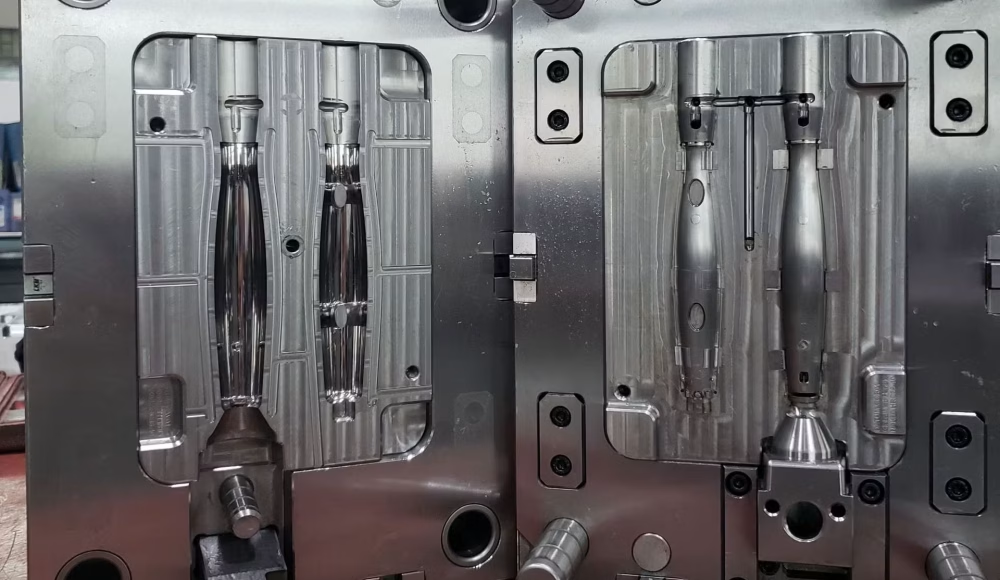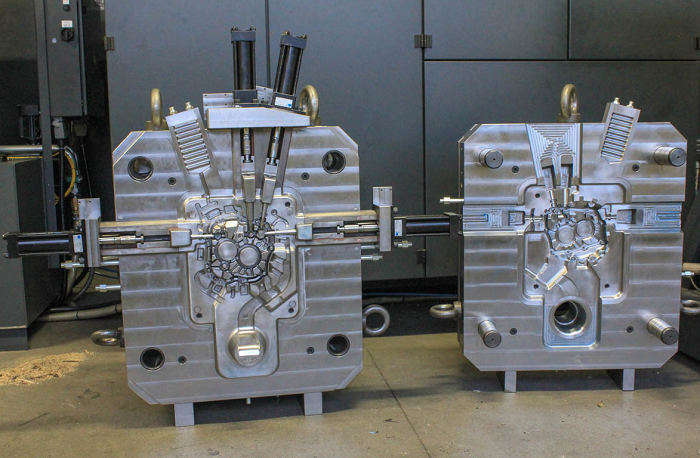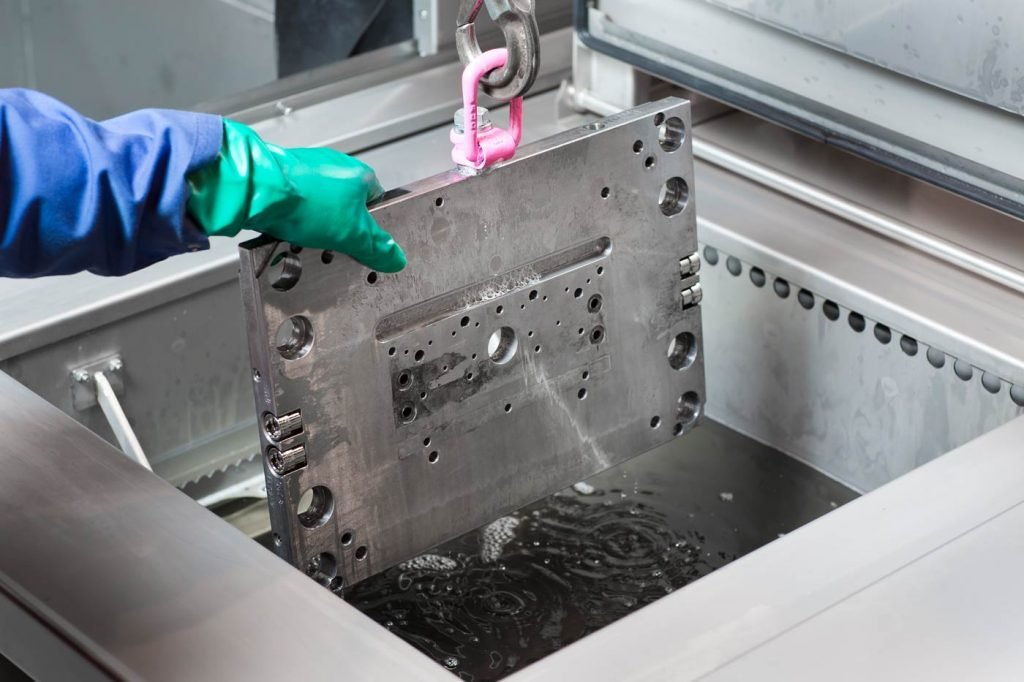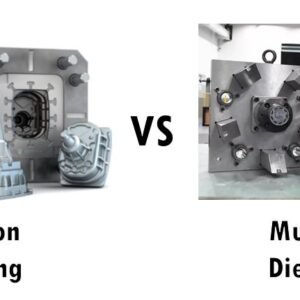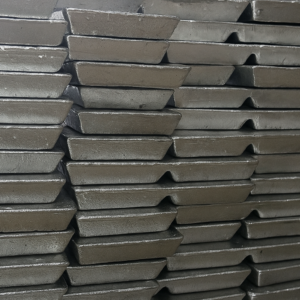В света на прецизното производство, леене под налягане се откроява като един от най -ефективните и повтарящи се методи за производство на сложни метални компоненти. Централен за този процес е Инструмент за леене на матрици-Прецизно обработена плесен, изграден за издържане на инжекции с високо налягане на разтопен метал. Докато инструментариума представлява значителна предварителна инвестиция, разбиране на Фактори, които влияят на цената на инструмента за леене на матрици може да ви помогне да вземете по -добри решения, намалете отпадъците, и максимизирайте възвръщаемостта си на инвестицията през жизнения цикъл на продукта.
Защо инструментариумът за леене на умре е скъпо
Инструментариумът за леене на матрици е подложен на екстремни условия- високи температури, интензивно налягане, и постоянен механичен стрес. В резултат на това, Инструментите трябва да бъдат конструирани от Специални стомани с висококачествен инструмент, прецизно проектиран за всеки проект. Висококачествените матрици могат да струват по-първоначално, но се изплащат с течение на времето поради намаления престой, по -малко дефекти, и по -дълъг живот на инструмента.
Основни фактори, които влияят на разходите за инструменти
Дизайн на инструмента: Основата на дългосрочния успех
Фазата на проектиране е най -критичният фактор при определянето на двете цена и производителност. Добре проектираният инструмент за леене на матрици гарантира постоянно качество на продукта, Оптимални времена на цикъл, и минимални вторични операции. Лош дизайн на инструменти, от друга страна, често води до:
Дефектни части
Светкавица, порьозност, и проблеми с свиването
По -високи проценти на скрап
Повишени разходи за обработка и довършителни работи
Дизайн за производство (DFM) Принципите трябва да се прилагат рано. Фактори като ъгли на черновата, дебелина на стената, линии за разделяне, и системите за изхвърляне трябва да бъдат оптимизирани с помощта на софтуер за 3D моделиране и симулация. Препоръчително е Инвестирайте в инструменти за валидиране и симулация на дизайна Преди рязане на стомана.
Системи за бегач и вентилатор: Контролиране на металния поток
Добрата система за бегач гарантира, че разтопеният метал се доставя равномерно и бързо в кухината на формата. Правилното вентилация позволява на газовете да избягат, предотвратяване на хванат въздух и непълни пълнежи.
Съвременните дизайнерски екипи използват Софтуер за симулация на кастинг да се:
Прогнозирайте и визуализирайте поведението на разтопения поток
Определете потенциалните области на порьозността
Оптимизирайте разположенията на портата и преливането
Подобренията в дизайна, направени на този етап, значително намаляват риска от производствени проблеми и препроектиране на инструменти, Понижаване на общата ви цена на проекта.
Дизайн на охлаждащата верига: Термично управление за качество и дълголетие
По време на кастинг, Разтопеният метал се охлажда и се втвърдява във формата. Ако охлаждането е неравномерно или лошо контролирано, Резултатът може да бъде вътрешен стрес, изкривяване, или по -бавни времена на цикъла.
Охлаждащи вериги - вградени във формата за поток на охлаждащата течност - помагат да управляват температурата. Някои производители намаляват разходите, като поставят общи канали за охлаждане, но стратегически разработен термичен анализ резултати в:
По -добра съгласуваност на частта
По -кратко време на охлаждане
Разширен живот на инструмента поради намален термичен шок
Докато термичният анализ добавя към първоначалните разходи, Той значително подобрява производителността и качеството на части с течение на времето.
Вложки за инструменти: Интелигентен дизайн за ефективност на разходите
Вложките на инструмента са Модулни компоненти В рамките на по -голяма капка за леене на матрици. Вместо да заменя целия инструмент поради износване или ерозия, Само вложката трябва да бъде заменена.
Вложките предлагат множество предимства:
По-ниски разходи за дългосрочна поддръжка
Гъвкавост за адаптиране или промяна на дизайна на инструмента
По -бърз ремонт на ремонт
Постоянно качество на частта през целия живот на инструмента
Области, подложени на високо износване, като порти и ъгли, трябва да бъде снабден със сменяеми вложки. Опитните производители на инструменти могат да прогнозират зоните за износване и да включат съответно вложки.
Материал на инструмента: Съвпадение на стоманена степен на нанасяне
Изборът на клас на стомана от инструмента влияе пряко върху издръжливостта и разходите. Често използваните материали включват:
H13 Инструментална стомана: Предлага добър баланс на топлинна устойчивост и здравина. Идеален за алуминий и магнезий.
H21 / H22: По-добре за операции с по-висока температура като кастинг с месингови или месингови матрици.
Стомани с прахообразни инструменти (напр., CPM степени): Премиум стомани с превъзходна устойчивост на износване, Идеален за дълги производствени писти.
Правилният материал зависи от:
Материал за леене (алуминий, цинк, магнезий)
Очакван живот на инструмента (Брой снимки)
Изисквания за сложност на части и завършване
Разхождането на повече за по-висококачествена стомана може да спести десетки хиляди в инструментални разходи по време на производството с голям обем.
Поддръжка и дълголетие: Защита на вашата инвестиция в инструмента
Колкото и да е проектиран инструментът ви, Неминуемо ще се износва поради високото налягане и топлинните цикли. Редовната поддръжка е от решаващо значение за удължаване на живота на инструмента и осигуряване на постоянно качество на частта.
Най -добри практики за поддръжка на инструменти за умиране:
Почистете внимателно инструментите след производството.
Проверете за износване, напукване, или термична умора.
Нанесете защитни покрития (напр., азот, PVD).
Използвайте правилни процедури за съхранение, за да избегнете корозия и повреди.
Рутинната поддръжка е Далеч по-рентабилен отколкото спешни ремонти или пълни подмяна на инструменти.
Разширяване на живота на инструмента: Дизайн и партньорство има значение
Дълголетието на инструмента не е само за материал - а за това колко добре е инструментът проектиран, изграден, и успя През целия си експлоатационен живот.
Партньорството с опитен доставчик на кастинг може да доведе до това:
Оценка на прогнозния инструмент за живот
Вградени функции за компенсация на износване
Оптимизирани разположения на вмъкване
Решения, управлявани от данни относно обновяването или заместванията
Ако управлявате производство с голям обем (напр., >100,000 снимки/година), Тези спестявания се добавят бързо.
Заключение: Инвестирайте разумно, Поздравете наградите
Докато в началото разходите за инструменти за леене на матрици могат да изглеждат високи, Качественото инструменти е инвестиция, не разход. Правилният подход към дизайна на инструмента, материали, вложки, и поддръжката може да доведе до:
По-ниски производствени разходи на части
По-малко дефекти и стъпки за след обработка
Увеличен изход с постоянно качество
По -дълъг живот на инструмента и намалена честота на подмяна
При TOPS Прецизност, Ние работим в тясно сътрудничество с нашите клиенти, за да балансираме качеството и разходите. Нашият опитен инженерен екип използва 3D симулация, Високопроизводителни стомани, и интелигентен дизайн на инструменти за доставяне на надежден, Решения за производство с голям обем.
📞 Свържете се с нас днес За да научите повече за опциите за инструменти за леене на матрици, или да получите цитат, съобразен с вашите части за проектиране и производство.
Често задавани въпроси
1. Защо инструментът за леене на матрици е толкова скъп?
Инструментите за леене на матрици трябва да издържат на екстремни температури и високо налягане, което изисква прецизен дизайн и използването на скъпи стомани от инструменти. Високите авансови разходи се балансират от по-ниските дългосрочни разходи чрез постоянно производство и дълголетие на инструменти.
2. Колко дълго трае един инструмент за леене на матрица?
Животът на инструмента варира в зависимост от материала и дизайна, но може да варира от 50,000 до над 1,000,000 изстрели. Правилен дизайн, поддръжка, и използването на вложки може значително да удължи живота на инструмента.
3. Може ли инструментът да се използва повторно за различни части?
Общо взето, не. Инструментите за отливане са изработени по поръчка за конкретна част от геометриите. въпреки това, Модулни инструменти и взаимозаменяеми вложки могат да се използват за създаване на варианти на подобни части.
4. Как мога да намаля разходите за инструменти за леене на матрици, без да се компрометира качеството?
Фокусирайте се върху Дизайн за производство (DFM), Използвайте софтуер за симулация рано, Изберете трайни материали, и внедряване на сменяеми вложки. Партньорството с опитен кастър също може да доведе до рентабилни и оптимизирани решения за инструменти.
5. Какви материали се използват най -често за инструменти за леене на матрици?
H13 Инструментална стомана е най -често срещаният поради високата си здравина, Термична устойчивост на умора, и достъпност. Премиум стомани харесват H21 или CPM Степените могат да се използват за по -взискателни приложения или по -дълги работи.
Прочетете повече:
Оптимизиране на матрицата за леене на матрици
Съвети за дизайн за леене на матрици
Постигане на ъгъл на нулев проект

